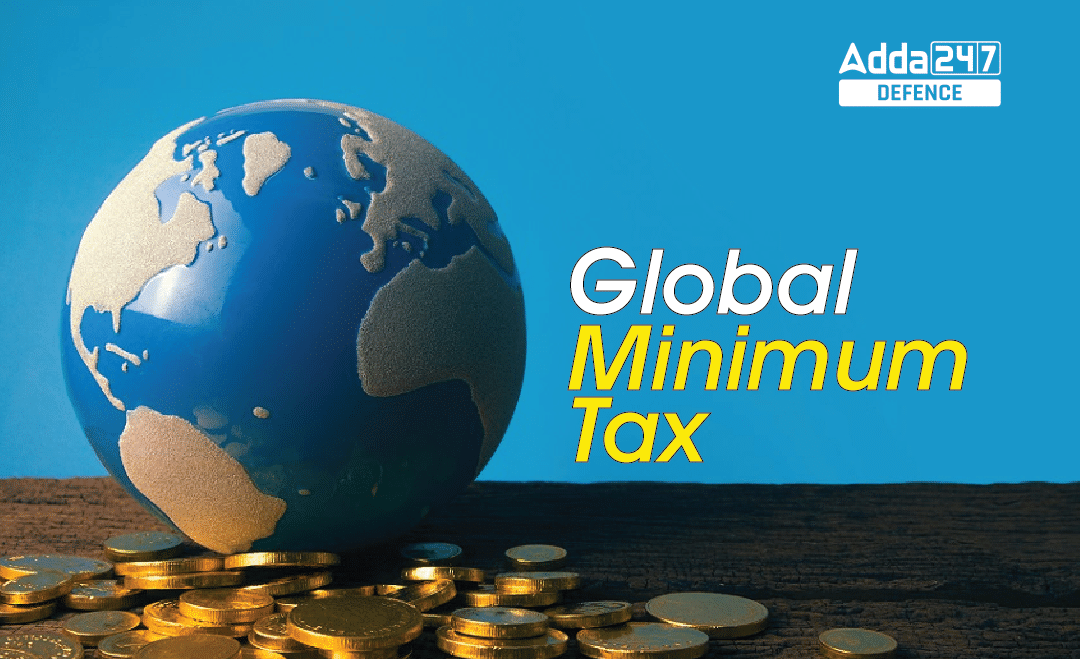What is Global Minimum Tax?
It is a global agreement announced by the Organization of Economic Corporation and Development (OECD) to assure big companies pay a minimum tax rate of 15% in order to minimise the chances of avoiding taxation and it has been signed by 136 countries including India. According to OECD, four countries – Kenya, Nigeria, Pakistan, and Sri Lanka had not yet joined the agreement. As per the estimated data of OECD the minimum tax will yield $150 billion in additional global tax revenues annually.
Global Minimum Tax
This agreement consists of countries which cover 90% of the global economy. G20 leaders supported the global minimum corporate tax deal for the 2023 commencement.
This tax will be applicable to companies’ overseas profits but governments will still have the privilege of setting the local corporate tax rate as per their choice In case a company pays lower rates in a particular country, their home governments can “top-up” their taxes to the agreed minimum rate, eliminating the advantage of shifting profits to a tax haven
The COVID-19 pandemic caused a financial crisis which hit the global economy badly, hence with added urgency to the negotiations, the governments come up with this global plan aiming prevention of tax evasion by multinational firms and discouraging the practice of shifting tax revenues to low-tax countries or tax havens. The minimum tax and other related provisions seek to put an end to years of tax competition between governments to attract foreign investment.
A fixed global minimum corporate tax will ensure worldwide uniformity in corporate taxation. Usually, colossal corporate firms hunt countries with very less corporate tax and high exemptions, to open their companies there and it leads to imbalanced growth at the global level.
Also read – G7 Countries List
Aim of Global Minimum Tax
The agreement mainly solves two purposes:
- Preventing multinational firms from paying low taxes (or no tax) by booking their profits in tax havens;
- Imposing a Global Minimum Tax on Multinational giants wherever they operate, even if they do not have a physical presence in the country.
Under this deal, there are two “pillars” of taxation on corporations. Pillar 1 is estimated to affect the world’s top 100 companies, governments would levy tax on profit margins of above 10 per cent, On the other hand, in Pillar 2, a global minimum tax rate of 15 per cent will be imposed on overseas companies.
Pillar-1 provisions empower countries to tax companies where they earn their revenue. Under this, companies’ excess profit — defined as in excess of 10 per cent of total revenue — will be taxed at 25 per cent.
Pillar-2 will be applicable to overseas profits of multinational firms with €750 million ($866 million, nearly Rs 6,400 crore) in sales globally.
FAQs related to Global Minimum Tax
Q1. What is A Global Minimum Tax (GMT)?
Ans. A Global Minimum Tax (GMT) applies a standard minimum tax rate to a defined corporate income base worldwide.
Q2. How will be GMT applied?
Ans. It will ensure big companies pay a minimum tax rate of 15% which makes it harder for them to avoid taxation.



 List of All Important Inventions and The...
List of All Important Inventions and The...
 Headquarters and Commands of Indian Arme...
Headquarters and Commands of Indian Arme...
 IND–INDO CORPAT Exercise 2024
IND–INDO CORPAT Exercise 2024
